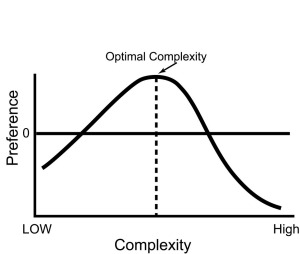Musical taste has always been imagined as a completely subjective domain. Some people like blues, other people enjoy country music, while others have great time listening to Beethoven’s symphonies in concert halls. In a sense, every time we visit iTunes and choose a new album to buy, we are exercising our free will. But, is that really true? Surprisingly, several studies in aesthetic perception of music suggest just the opposite. In statistical terms, if we have previous knowledge of a number of parameters for the listeners and for the music, we can form a quite decent idea of whether or not certain listeners are going to like certain compositions. Needless to say, this doesn’t work for the single person but for large groups only. Let’s try to understand why our musical taste is more predictable than we think it is.
Cognitive and cultural constraints play a central role in shrinking the space of the musical compositions we may potentially like. We are born in a musical society with a rich musical tradition that inherently influences our musical taste since we are children. Exposure to specific musical styles shapes our very idea of what is music. For example, Western people are accustomed to major and minor scales, and usually find quite “unnatural” other types of pitch organisations such as Indian ragas and Arabic scales. Likewise, the opposite is certainly true. Familiarity with a specific musical tradition guides our aesthetic assessment. Numerous studies in music cognition predict that a hard rock enthusiast is more likely to enjoy a new song by Metallica than an orchestral piece by Stravinsky. Musically speaking, we are a rather conservative species seldom interested in exploring new musical territories.
Shifting from the cultural domain towards the cognitive domain, we find that liking for a piece of music is related to its degree of complexity. It’s a great challenge to define musical complexity, but a way out of this conundrum is the definition provided by information theory, which measures complexity in terms of the amount of information carried by a message. In our case, we consider musical information. To better understand this concept, let’s take a couple of compositions as examples: Lullaby by Johannes Brahms and Piano Sonata No.2 by Pierre Boulez. Lullaby is harmonically, rhythmically and melodically stable: almost no section infringes our musical expectations. Music unfolds smoothly without unpredictable cracks and twists. For this reason, we can claim that this piece presents a low degree of complexity. Sonata No.2 stands on the opposite side of the complexity continuum. This composition is highly unstable in terms of many musical parameters such as rhythm, melody, timbre, harmony and articulation. Also, the mere astonishingly number of sounds produced per second during some sections of the work contributes to increase the overall level of complexity.
What’s the relationship between complexity and liking then? In music, liking and complexity follow the so-called inverted-U relationship. In other words, humans don’t like music that is too simple and music that is too complex. We enjoy listening to compositions with the “right dose” of complexity. Too simple music is boring. Too complex music is unintelligible. Is the “right dose” of complexity the same for all humans? Of course, not. It depends on musical style, musical background and musical training. Expert musicians usually tend to like pieces which are more complex than those enjoyed by non-musicians. Repetition plays an important role as well, in that multiple hearings help lower the perceived level of complexity of a composition. And a change in complexity entails a change in liking. This explains why after listening for a while to songs which are very simple we get bored, whereas repeated hearings of a complex composition help us better appreciate the work.
The phenomena I’ve described sound pretty straightforward but here I’ve made a very long story short; perhaps too short. The reality is that the type of relationship between liking and complexity is likely to depend on musical style. In other words, different musical styles may be described by different relationships between liking and complexity. An experiment I’ve recently conducted with Dr Mauro Vallati disproves the inverted-U hypothesis in the case of contemporary music, supporting the idea that the more complex a composition is, the less it is enjoyed. Nevertheless, the fundamental message remains unvaried: aesthetic perception in music is driven by some principles shared by all humans. Tell me who you are and I’ll tell you what music you can enjoy!
As an aside: I suppose someone might be a bit worried about this reductionist approach. Does the fact that a portion of what forms our musical taste is predetermined diminish our being human? Of course, not! People often feel threatened by scientific explanations. They think that science, when studying our species, removes from the equation all of those elements such as emotions, expectations and values which make us human. A popular idea is that science equates to prediction, and predictability doesn’t fit well with the idea we have of ourselves. I guess, human beings like to fancy they are as free as a bird. But that’s not the case. In what I’ve discussed in this post, for example, music cognition helped us uncover common patterns which all humans rely on when listening to music. These restrictions are some of the elements that make us human. And what’s more human than understanding what makes us human?

